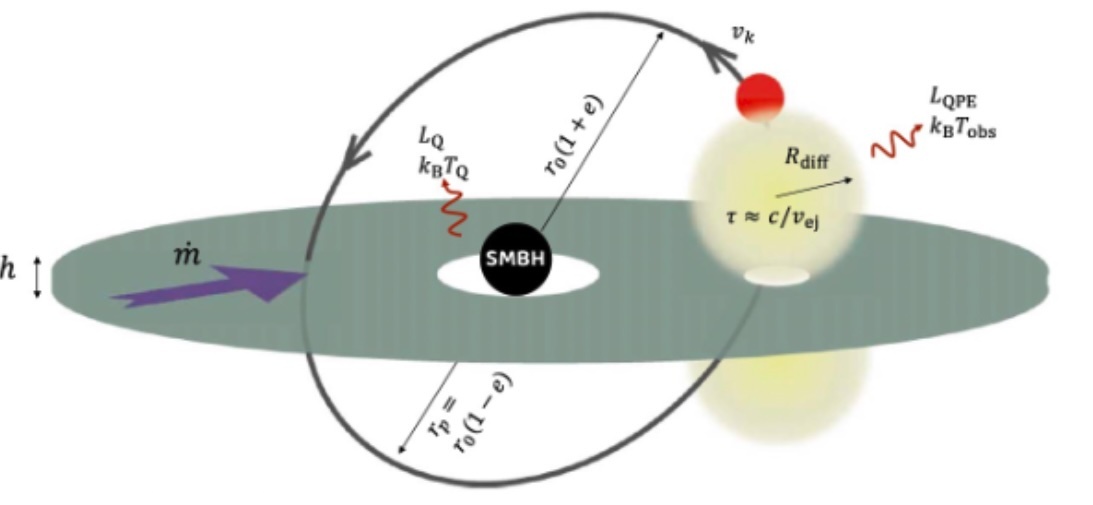Theoretical Astrophysics Colloquia
56th Colloquium
Early-stage Evolution of Quasi-periodic Eruptions
Tomoya Suzuguchi
Kyoto University
Abstract
Quasi-Periodic Eruption (QPE) is a phenomenon in which the X-ray luminosity curve shows quasi-periodic bursts near the center of a galaxy. The burst interval is a few hours to a few days, the duration is 10% of the burst interval, the peak luminosity is about $10^{41-43}\,{\rm erg}\,{\rm s}^{-1}$, and the temperature at the peak is about $100 - 200\,{\rm eV}$. The most popular theory for the origin of this phenomenon is that a star orbiting around a central supermassive black hole (Extreme mass ratio inspiral; EMRI) emits radiation when it collides with an accretion disk. Recent follow-up observations of galaxies in which tidal disruption events (TDEs) have been detected have also reported the discovery of QPEs, suggesting that TDE-derived disks are the origin of accretion disks. Such emission in a disk+EMRI system was first proposed by Linial & Metzger (2023). They estimated the luminosity and temperature of the emitted radiation when EMRI passes through the disk surface, assuming the inner region of a standard disk as the disk, and claimed that the observed QPE features can be explained. However, the model of Linial & Metzger (2023) considered a stationary standard disk and did not incorporate the time evolution of disk physics. In actual TDEs, the accretion rate decreases with time, and the areal density and scale height of the disk are time-dependent. In addition, since the accretion rate is super-Eddington in the early stage of a TDE, a slim disk must be considered. We investigate the time evolution of QPE observables in the early stage of TDE by considering the decay of accretion rate after the onset of TDE and the transition of the disk from a super-Eddington disk to a standard disk. We find that the temperature in the early stage of the TDE is larger than that currently observed and that harder X-ray bursts may be observed. Such hard X-ray bursts are observed without being buried by the TDE disks with peaks in the soft X-ray region. It is also found that the duration of QPEs is shorter than that currently observed. Although it is generally difficult to observe events with such short durations, it is found that events with a distance of about 100 Mpc can be observed with the sensitivity of NuSTAR, which is currently in operation. In this colloquium, we will mainly discuss these results and future prospects, but if time permits, we will also discuss a more preliminary result, the “multi-messenger observability of QPEs”.



 和 英
和 英